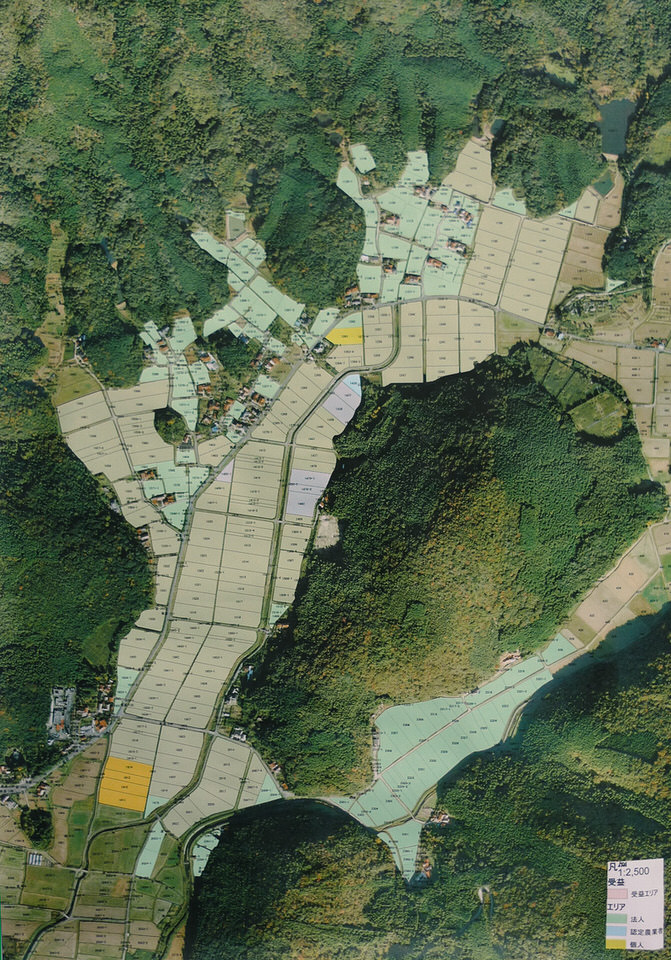Language
-
- JAPANESE
- ENGLISH
About
-
The Aokage Project is a project about the village of Aokage in the Yamaguchi Prefecture, Japan. The project team comprises a photographer, a designer and a filmmaker who are all interested in current demographic problems in the world. Specifically, we are examining the effect of the low birth rate and the ageing society on the future of marginal villages in Japan, half of which are in danger of becoming extinct within the next fifty years. With the collaboration of the villagers, the situation in Aokage is being documented on an everyday basis by project members who are staying in a vacant traditional Japanese house in the village.

Summary
-
We will compile records in two ways: by taking photos and by making audiovisual recordings.
For the photo documentation, we will upload one picture everyday which has been taken either by the Aokage villagers themselves or by outsiders who are just visiting
the village. We will use a disposable camera by Fuji Film called ‘Utsurun-desu’, which is becoming popular amongst young Japanese. The ‘Utsurun-desu’ has 27 or 36 exposures, and we will manage the development, printing and scanning for uploading onto the weblog. Anybody can join the photo documentation project.
We are going to make a short documentary based on the video footage that we record during the 2016 summer stay. We aim to complete the first feature documentary by 2020.
Synopsis
-
Here is a dreamy microcosm of Japanese society in a disappearing Japan. The clichéd phenomena of the ‘ageing society’ and ‘marginal village’ are both apparent in the western village of Aokage.
‘Sixty-year-olds are still the junior labour force’, says Toru Yoshimura, an organiser of the 13th Agricultural Union. The agricultural community which cultivates the limestone terrain in Aokage consists of 42 farmers, 33 of whom are over sixty. Yoshimura is worried about the village becoming extinct, and he initiates a reform to rally the ‘Grey Gold’ into fighting for their survival and that of future generations.
One could use Aokage as a microcosm to examine socio-economic polarisation on a greater scale or one could raise the fundamental question about fatalism: should one simply accept the risk to life caused by demographic changes, natural disasters or wars? ‘Vestiges’ quietly addresses these issues in a visual and dramaturgical way.
Japan is one of the most radical ageing societies in the world, and this documentary foretells the last days of the demographic crisis in the village of Aokage in 2066.
Manifesto-
Document - ‘Vestiges’
Occasionally one tries to examine the process of how one recollects events and experiences from the past. To get a clearer picture, one can make use of scenes from everyday life which have been captured on film, in photographs or described in letters or e-mails. We can often delve briefly into our subconscious and recall moments from the past when looking at such documents. The feelings that are evoked could be called ‘Vestiges’. Taking this as our starting point, we focus on the concepts of ‘ephemerality’ and ‘awareness of our own mortality’ which are usually far from our mind as we go about our daily lives. By taking photos, making videos and deciphering the vestiges of the past, we aim to deliver the unspoken messages of people from the past and present to the next generation.
Comments
-
Regarding Mr Toru Yoshimura
It had never occurred to me to launch a project in Yamaguchi prefecture until I met Mr Yoshimura, one of the organisers of the 13th Agricultural Union in Aokage, Yamaguchi. When I was a coordinator for the Artist-in-Residence Programs at Akiyoshidai International Art Village, I met Mr Yoshimura who created the ‘House for Cultural Exchange’ in Shuho town in 1992. Mr Yoshimura worked as a public servant in Shuho town for over 40 years, and was actively involved in promoting local activities in the fields of agriculture, education, art, literature, traditional performance and tourism in the Akiyoshidai plateau area.
Mr Yoshimura has a flair for attracting innovative people. As a local leader, he has drawn on talents such as Mr Arata Isozaki (architect) and Mr Toshio Hosokawa
(composer), as well as other experts in their fields. I happened to be listed on the last line of his ‘talent book’ as organiser of the Aokage Project. I believe that Mr
Yoshimura’s talented associates all share a powerful imaginative spirit which enables them to recreate the feeling of ‘the good old days’ in Japan when people were more sympathetic towards each other. I myself was highly influenced by my grandfather who had a profound bearing on my moral code. I think that the intrinsic values he ingrained in me have helped me to empathize with the Aokage villagers and understand Mr Yoshimura’s concern for them, and this has motivated me to work on
the Aokage Project.
Through the Aokage Project, I would like to record and research the spirit of ‘good old Japan’ in the village of Aokage. I want us to be able to use our imagination to
empathise with each other and build up trustworthy relationships.
We should respect what we cannot see, and I believe by gazing at what we can see, we can start to comprehend what we cannot see in everyday life. My aim is to capture the invisible by using the visual media of photography and film.
Akio Yuguchi
Organiser of the Aokage Project
Regarding Two Young Men
Two young men visit a village situated between the Akiyoshidai Plateau and the Chugoku Mountains where many old people live. Living side by side with the residents in the depopulated area, they are going to make a documentary.
Not only are the villagers enthusiastic about the project, they are delighted to see ‘youngsters’ walking about in their village.
For myself as I approach my 70th birthday, I feel rejuvenated.
Toru Yoshimura
Member of the 13th Agricultural Union